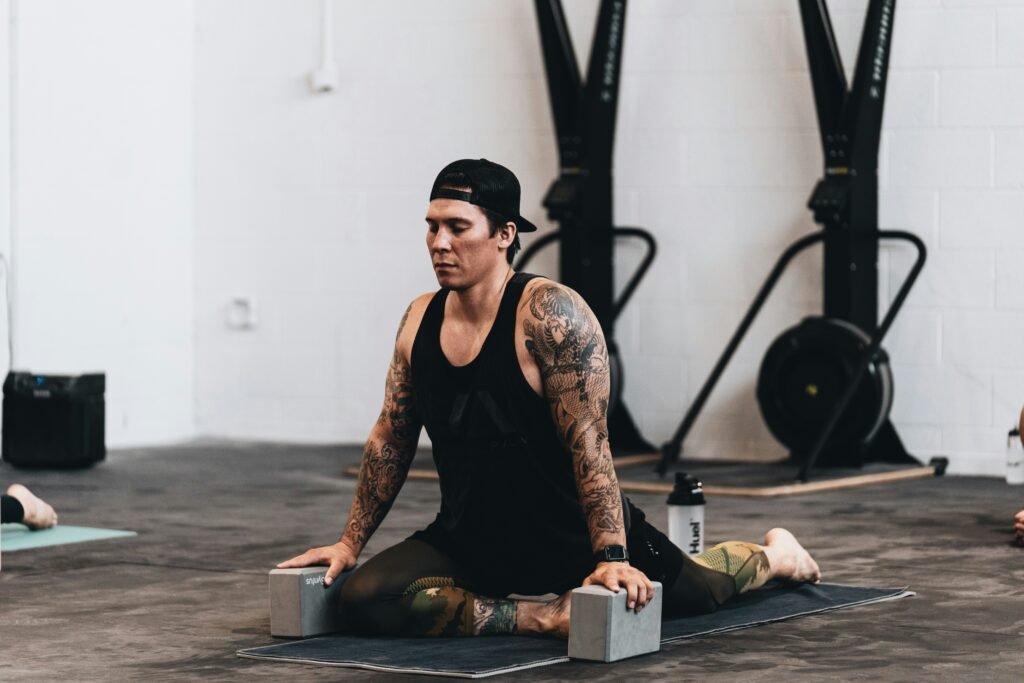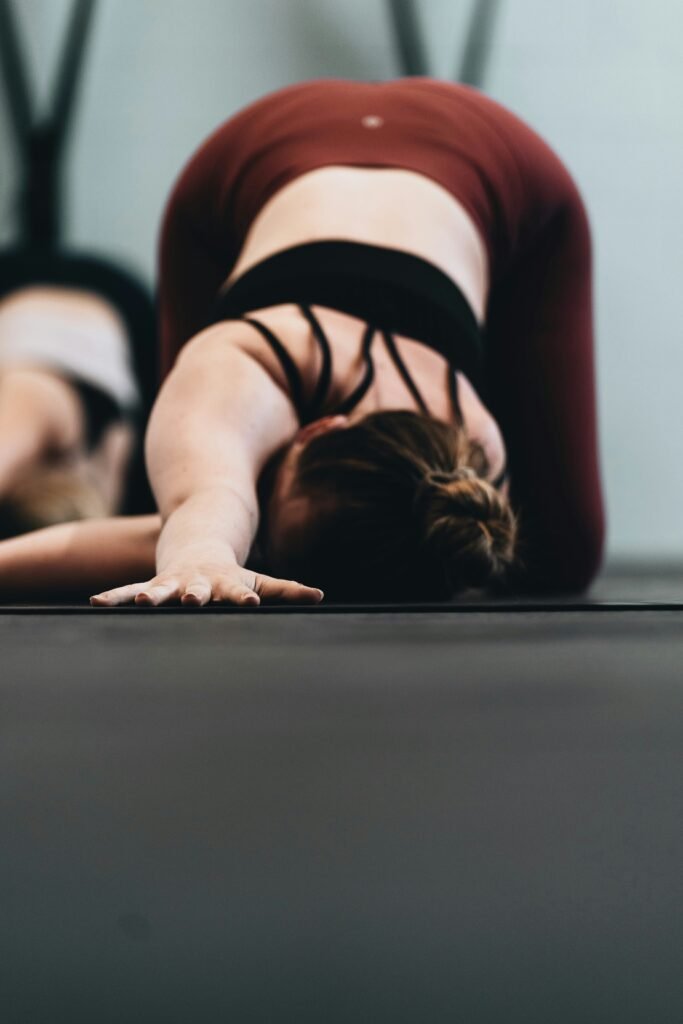Are you looking to improve your flexibility and mobility?
Stretching is a simple and effective way to improve flexibility, reduce muscle tension, and increase range of motion. If you are new to stretching, it’s important to start with a basic routine that will help you gradually build flexibility and prevent injury. In this article, we will guide you through a simple stretching routine designed specifically for beginners.

Benefits of Stretching
Stretching offers a wide range of benefits for both your body and mind. It not only helps improve flexibility, but also enhances circulation, reduces stress, and relieves muscle tension. By incorporating a stretching routine into your daily activities, you can improve your overall quality of life.
Enhances Flexibility
Stretching regularly helps to lengthen muscles and increase flexibility, making it easier to perform daily tasks and physical activities. Improved flexibility also reduces the risk of injury during exercise and improves posture.
Reduces Muscle Tension
Stretching can help alleviate muscle tension and soreness by increasing blood flow to the muscles. It can also help improve your range of motion and prevent stiffness in the joints.
Improves Circulation
Stretching helps to improve blood circulation throughout the body, delivering essential nutrients and oxygen to the muscles and tissues. This can help improve energy levels and overall wellness.
Relieves Stress
Stretching can help relax both the body and mind, reducing stress and promoting a sense of well-being. Incorporating stretching into your routine can be a great way to unwind and de-stress after a long day.
Getting Started with Stretching
Before starting any stretching routine, it’s important to warm up your muscles to prevent injury. You can begin with a few minutes of light cardio, such as jogging in place or jumping jacks, to get your blood flowing and prepare your body for stretching.
Warm-Up
A proper warm-up is essential before beginning any stretching routine. Start with 5-10 minutes of light aerobic exercise, such as brisk walking or jogging in place, to increase your heart rate and warm up your muscles. This will help prevent injury and prepare your body for stretching.
Proper Clothing
Wearing comfortable, loose-fitting clothing will allow you to move freely and perform stretches without restriction. Make sure to wear breathable materials that will help keep you cool and comfortable during your stretching routine.
Equipment
You don’t need any fancy equipment to stretch effectively. A yoga mat or towel can provide a comfortable surface for stretching, and a water bottle to stay hydrated is always a good idea.
Simple Stretching Routine for Beginners
Now that you’re warmed up and ready to go, it’s time to start your stretching routine. The following stretches target major muscle groups and are designed to help beginners gradually improve flexibility. Hold each stretch for 15-30 seconds and repeat on both sides.
Neck Stretch
Instructions: Sit or stand with your back straight. Gently tilt your head to one side, bringing your ear towards your shoulder until you feel a stretch along the side of your neck. Hold for 15-30 seconds, then switch sides.
This stretch helps relieve tension in the neck and shoulders, which is especially beneficial if you spend long hours sitting at a desk or looking at screens.
Shoulder Stretch
Instructions: Stand tall with your feet hip-width apart. Bring one arm across your body and use the opposite hand to gently press the elbow towards you to feel a stretch in your shoulder. Hold for 15-30 seconds, then switch sides.
This stretch targets the shoulders and upper back, helping to relieve tension and improve posture.
Chest Stretch
Instructions: Stand in a doorway with your hands on either side of the frame at shoulder height. Lean forward slightly, keeping your back straight, to feel a stretch in your chest and shoulders. Hold for 15-30 seconds.
This stretch helps to open up the chest muscles and improve posture, especially if you spend a lot of time sitting or hunched over a computer.
Back Stretch
Instructions: Sit on the floor with your legs extended in front of you. Reach your hands towards your feet, bending at the waist, until you feel a stretch in your lower back and hamstrings. Hold for 15-30 seconds.
This stretch targets the lower back and hamstrings, which can help reduce stiffness and improve flexibility in the spine.
Hip Flexor Stretch
Instructions: Kneel on one knee with the other foot in front of you, bent at a 90-degree angle. Lean forward, keeping your back straight, until you feel a stretch in the front of your hip. Hold for 15-30 seconds, then switch sides.
This stretch targets the hip flexors, which can become tight from prolonged sitting. It can help improve hip flexibility and relieve lower back pain.
Quadriceps Stretch
Instructions: Stand tall with your feet hip-width apart. Bend one knee and bring your foot towards your glutes, holding onto your ankle or foot with your hand. Keep your knees close together and push your hip forward to feel a stretch in the front of your thigh. Hold for 15-30 seconds, then switch sides.
This stretch targets the quadriceps, which can become tight from activities like running or biking. It can help improve knee alignment and prevent injuries.
Hamstring Stretch
Instructions: Sit on the floor with one leg extended in front of you and the other bent, sole of the foot against the inner thigh. Reach towards your extended leg, keeping your back straight, until you feel a stretch in the back of your thigh. Hold for 15-30 seconds, then switch sides.
This stretch targets the hamstrings, which can become tight from sitting or activities that involve bending at the waist. It can help improve flexibility and reduce the risk of injury.
Calf Stretch
Instructions: Stand facing a wall with one foot forward and one foot back. Bend your front knee and keep your back leg straight, pressing the heel into the ground to feel a stretch in the calf muscle. Hold for 15-30 seconds, then switch sides.
This stretch targets the calves, which can become tight from activities like walking or wearing high heels. It can help improve ankle mobility and prevent discomfort.
Ankle Circles
Instructions: Sit on the floor with your legs extended in front of you. Lift one leg off the ground and draw circles with your ankle in one direction, then switch to the other direction. Repeat on the other leg.
Ankle circles can help improve ankle mobility and flexibility, which is important for balance and stability.
Cool Down
After completing your stretching routine, it’s important to take a few minutes to cool down and allow your heart rate to return to normal. You can do some light walking or gentle stretching to help relax your muscles and prevent stiffness.
Deep Breathing
Sit or lie down in a comfortable position and take a few minutes to focus on deep breathing. Inhale deeply through your nose, filling your lungs with air, then exhale slowly through your mouth. This can help relax your body and mind after your stretching routine.
Gentle Stretches
Finish your routine with some gentle stretches that target areas of the body you may have missed. Focus on deep, relaxing stretches that allow you to release any tension or tightness in your muscles.
Hydrate
Don’t forget to drink plenty of water after your stretching routine to rehydrate your body and replenish lost fluids. Staying hydrated is essential for overall health and can help prevent muscle cramps and fatigue.

Tips for a Successful Stretching Routine
To get the most out of your stretching routine, keep the following tips in mind:
Consistency
Consistency is key when it comes to improving flexibility and reaping the benefits of stretching. Aim to stretch at least 3-5 times per week to see results and maintain your progress.
Listen to Your Body
Pay attention to how your body feels during stretching and adjust the intensity or duration of your stretches accordingly. Stretch to the point of mild discomfort, but never push yourself to the point of pain.
Breathe
Focus on your breathing during stretching to help relax your muscles and increase flexibility. Inhale deeply as you prepare for a stretch, then exhale slowly as you deepen the stretch.
Stay Relaxed
Try to relax your muscles and mind while stretching, as tension can hinder your progress and lead to injury. Focus on releasing any tightness or stiffness with each stretch.
Gradual Progression
Start with basic stretches and gradually increase the intensity or duration as your flexibility improves. Don’t rush the process, as overstretching can lead to injury.
Consult a Professional
If you have any existing health conditions or injuries, consult a healthcare professional or physical therapist before starting a stretching routine. They can provide guidance on safe stretches and modifications based on your individual needs.
Incorporating a simple stretching routine into your daily activities can have a profound impact on your overall well-being and quality of life. By taking the time to stretch and care for your body, you can improve flexibility, reduce tension, and enhance your physical and mental health. Start with these basic stretches for beginners and gradually build your flexibility over time. Remember to listen to your body, stay consistent, and enjoy the benefits of a regular stretching routine.